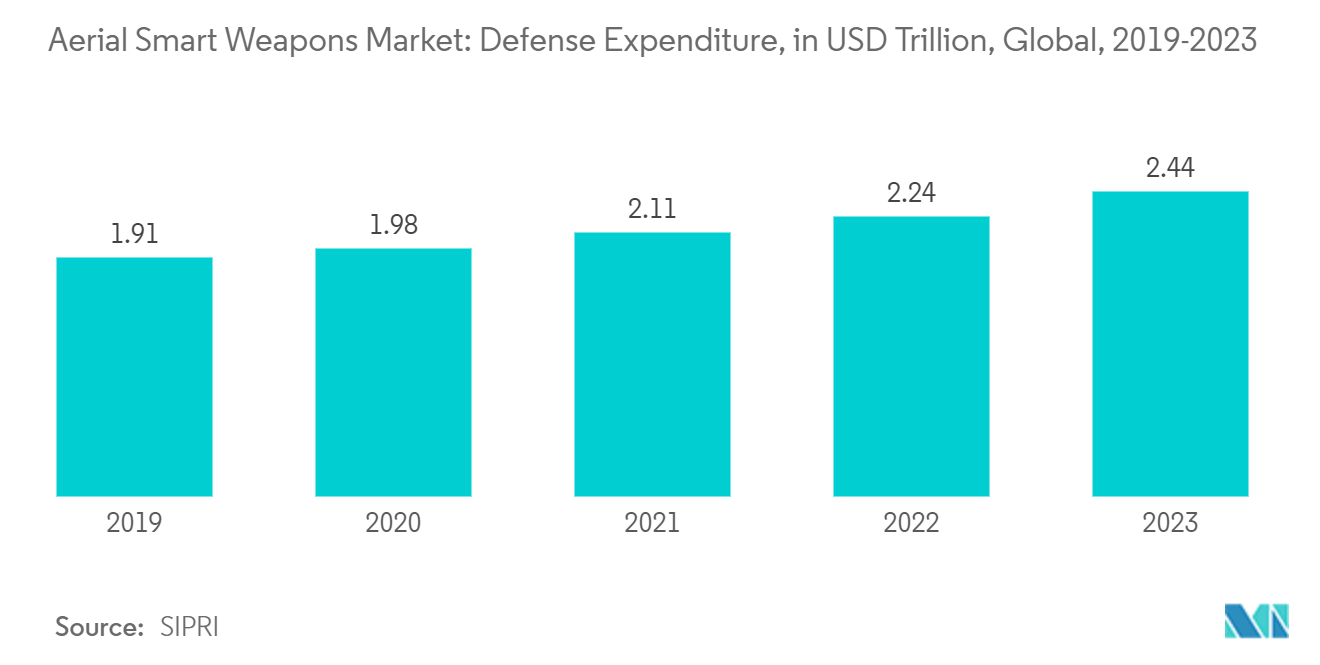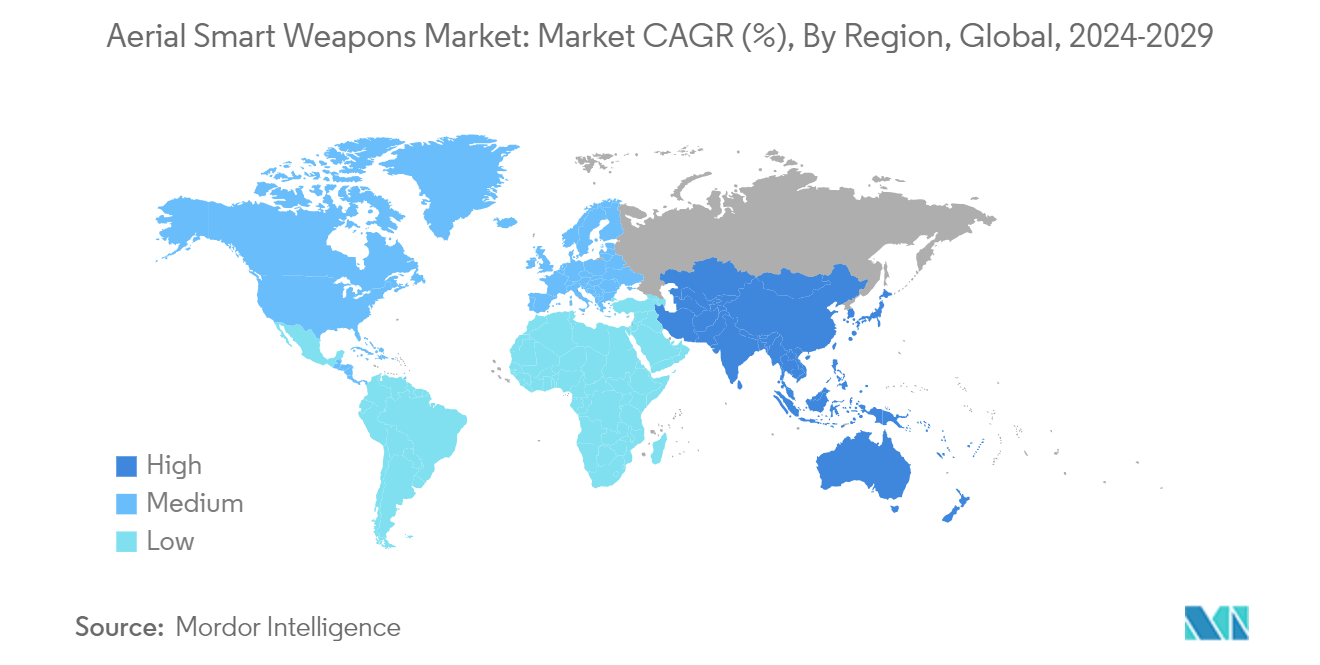Market Trends of Aerial Smart Weapons Industry
Missile Segment Expected to Witness Highest Growth During the Forecast Period
Due to the rising demand for advanced guided missiles from defense forces, the missile segment is set to dominate the market share over the forecast period. Key drivers for this growth include substantial increases in defense budgets across developed and developing nations, heightened usage of advanced weaponry, and evolving aerial warfare dynamics. For example, global military spending reached USD 2,443 billion in 2023, up 6.8% from USD 2,240 billion in 2022.
Trends such as developing network-enabled weapons, hypersonic missiles, and AI-driven armaments are poised to revolutionize military operations. Countries collaborate with aerial weapon manufacturers to craft advanced smart missiles for future threats. For instance, in October 2023, Indonesia's Ministry of Defense inked an offset agreement with Safran Electronic & Defense to procure AASM HAMMER smart weapons. Likewise, in November 2023, MBDA revealed its collaboration with the United Arab Emirates to co-develop smart weapons, targeting an initial production date 2030. This partnership focuses on the Smart Glider and Cruiser air-to-ground missiles, emphasizing AI-embedded capabilities for future combat.
Countries are also acquiring advanced military drones, outfitted with smart weapon systems, to address evolving threats and adapt to the modern warfare landscape. For instance, in May 2023, the Netherlands declared plans to arm its reconnaissance MQ-9 Reaper drones with laser-guided GBU bombs and air-to-surface Hellfire missiles. This modification and weapons procurement, valued between USD 107-268 million, anticipates initial armed drone deployment by 2025, with full deployment three years later. Such advancements and procurement of sophisticated weapon systems are projected to bolster the segment's growth during the forecast period.

North America Projected to Occupy the Largest Market Share During the Forecast Period
North America, led by significant advancements in the US, is poised to dominate the aerial smart weapons market. In 2023, the US military's defense budget hit USD 916 billion, a 2.3% rise from the previous year. This surge in investment towards cutting-edge weaponry is largely a response to heightened threats from China's and Russia's evolving battlefield capabilities. The US is channeling substantial funds into developing and integrating a spectrum of advanced smart weapon systems, from smart bullets to nuclear-capable hypersonic-guided weapons. With several aerial smart weapon procurement programs underway, the US is set to drive the market.
For instance, in January 2024, the US Air Force awarded Raytheon a USD 345-million contract to produce and deliver over 1,500 StormBreaker smart munitions. These munitions are designated for the US Air Force, US Navy, and foreign military sales to Norway, Germany, Italy, and Finland. Weighing 204 pounds (92.5 kilograms), the munition boasts a tri-mode seeker millimeter wave, imaging infrared, and semi-active laser, allowing it to target stationary and moving objects, day or night, in any weather. The StormBreaker is currently deployed on the F-15E Strike Eagle, with tests ongoing for the F-35B and F/A-18.
In another instance, January 2023 saw the US Navy awarding RTX Corporation a USD 317 million contract for 408 AIM-9X precision short-range infrared-guided air-to-air missiles, tailored for the navy’s jet fighters and other combat aircraft. Such initiatives underscore the region's promising market outlook during the forecast period.


